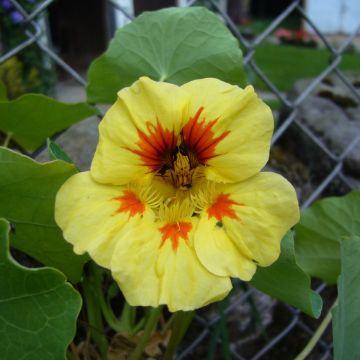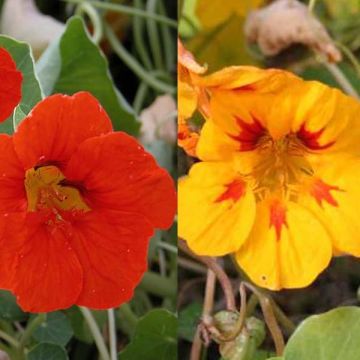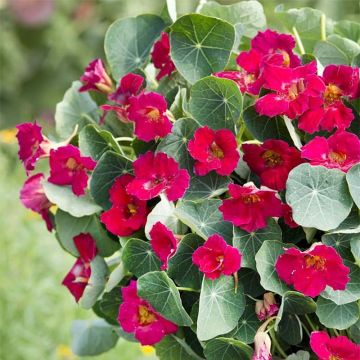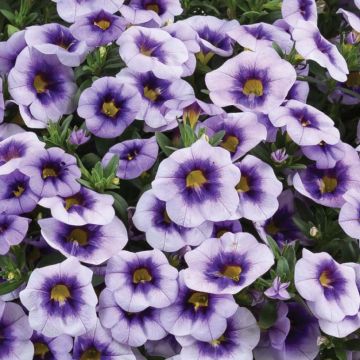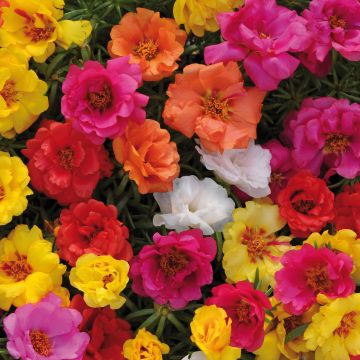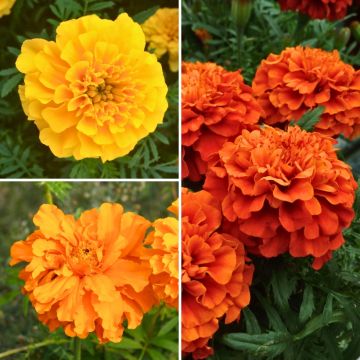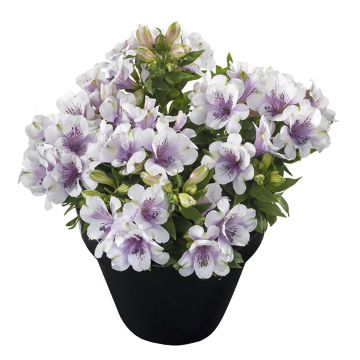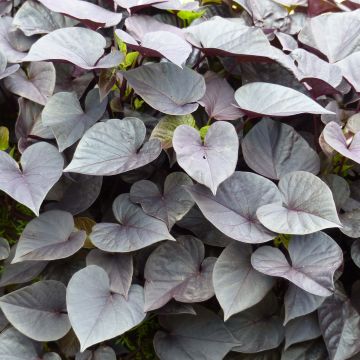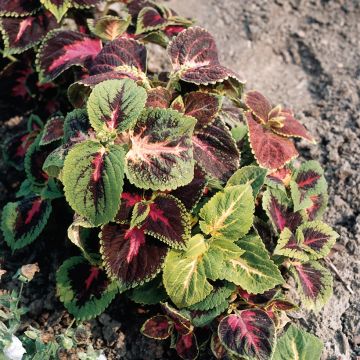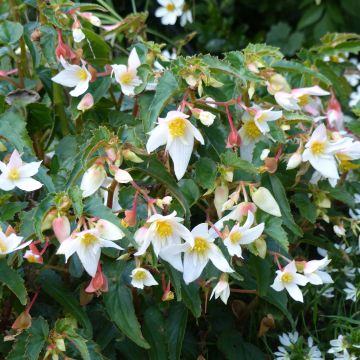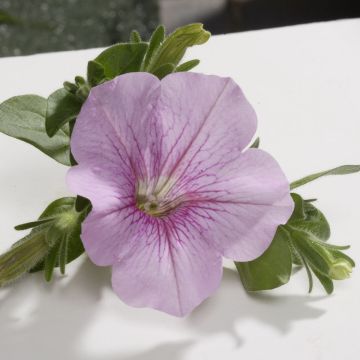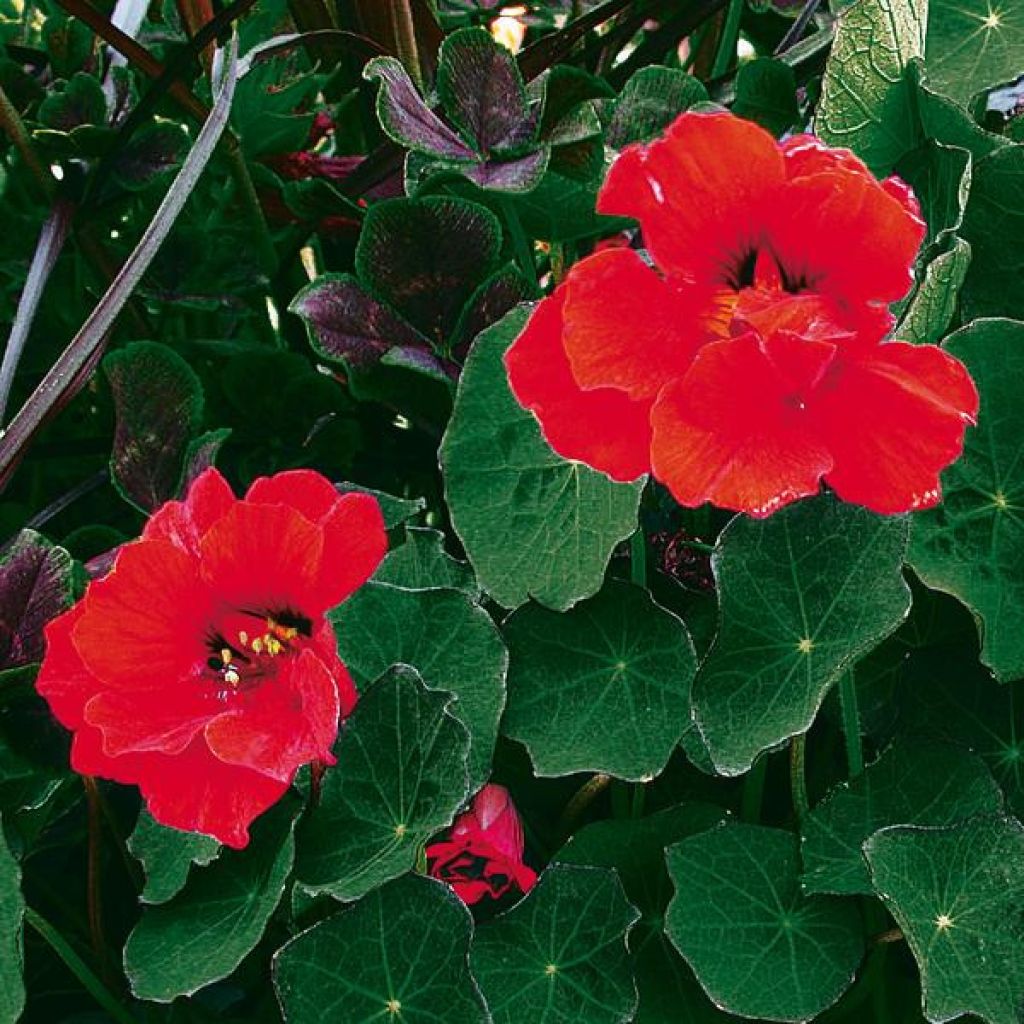

Capucine Red Wonder double - Tropaeolum majus
Tropaeolum majus 'Red Wonder'
Tropaeolum majus Red wonder
Cresson d'Inde, Nasturtium, Grande capucine, Cresson du Pérou, Capucine des jardins
Finally, this purchase turned out to be a disaster! In this already well-advanced month of July, I have just thrown away the last 2 plants as they were sick... after 3 months, despite all the care given, these very temperamental nasturtiums are now all dead, the last one (the tallest) was barely 20 cm (8in) tall after all this time... for a plant that was supposed to climb... it's a big disappointment!
graziella, 20/07/2022
This item cannot be shipped to the selected country
Delivery charge from €5.90
More information
Delivery charge from €5.90
More information
Schedule delivery date,
and select date in basket
This plant carries a 6 months recovery warranty
More information
We guarantee the quality of our plants for a full growing cycle, and will replace at our expense any plant that fails to recover under normal climatic and planting conditions.
From €5.90 for pickup delivery and €6.90 for home delivery
Express home delivery from €8.90.
Does this plant fit my garden?
Set up your Plantfit profile →
Description
The large 'Red Wonder' double Nasturtium is an uncommon selection of Tropaeolum majus that stands out with its beautiful more or less double flowers in a vibrant red. It is an annual climbing plant, with pretty rounded leaves, that blooms continuously from May until the first frost. This vigorous nasturtium also makes a remarkable seasonal ground cover, especially on a large slope.
Tropaeolum majus is an annual climbing or creeping plant, native to South America, belonging to the Tropaeolaceae family. It has given rise to numerous varieties and forms, some of which are more or less compact, with single or double flowers. 'Red Wonder' is a vigorous hybrid: the plant produces 1.5 to 2m (5 to 7ft) long, well-branched stems in a single season. It forms a beautiful mound of foliage and blooms from May to October, producing numerous trumpet-shaped flowers that stand out from the foliage. Their petals are unequal, more or less numerous, with a vermilion colour and a touch of dark purple at the throat. In our climates, this plant is mainly pollinated by bumblebees. The flowering is followed by the formation of fruits containing seeds slightly smaller than peas, easy to sow. The foliage consists of round leaves, about 4cm (2in) wide, peltate, with an elegant grey-green colour and almost white radiating veins.
This 'Red Wonder' nasturtium makes a beautiful climbing plant, but it can also be used as a ground cover. It can be planted in early spring on slopes, at the top of walls where it will cascade down. You can also grow it in a pot or a large hanging basket, with purple or dark-leaved Ipomoeas or an Alternanthera 'Purple Knight' for example. Plant it in the vegetable garden and orchard, where it will help eliminate pests harmful to your other crops while bringing freshness and cheerfulness to its humble companions. Nasturtium finds its way into the kitchen, its leaves and flowers can be added raw to salads, sauces, and mayonnaise. They have a pungent and aromatic flavour reminiscent of watercress. The flower buds and young fruits are sometimes preserved in vinegar, providing a substitute for capers.
The common name "nasturtium" comes from the spur that its flowers have, resembling the hood of a Capuchin monk's habit. It is a medicinal and aromatic plant.
Note: Please be aware that our young plug plants are professional products intended for experienced gardeners: upon receipt, transplant and store them under cover (veranda, greenhouse, cold frame...) at a temperature above 14°C (57.2°F) for a few weeks before being planted outdoors once the risk of frost has definitively passed.
Plant habit
Flowering
Foliage
Botanical data
Tropaeolum
majus
Red wonder
Tropaelaceae
Cresson d'Inde, Nasturtium, Grande capucine, Cresson du Pérou, Capucine des jardins
Cultivar or hybrid
Other Nasturtium
Planting and care
You can plant your nasturtiums in the ground or in a pot. If you plant them in the ground, wait until the last frosts have passed. In the meantime, you can pre-cultivate them in a pot in a warm and bright place to accelerate their growth. Plant your nasturtiums in a sunny location. They are very tolerant and appreciate poor soil. Very floriferous and fast-growing, they reach 2m (7ft) in the space of a summer. Remember to stake them if you use them as climbing plants. You can easily take cuttings of the stems. Nasturtiums attract aphids, so monitor and treat their appearance.
Planting period
Intended location
Care
Plug plants - Annuals
Haven't found what you were looking for?
Hardiness is the lowest winter temperature a plant can endure without suffering serious damage or even dying. However, hardiness is affected by location (a sheltered area, such as a patio), protection (winter cover) and soil type (hardiness is improved by well-drained soil).

Photo Sharing Terms & Conditions
In order to encourage gardeners to interact and share their experiences, Promesse de fleurs offers various media enabling content to be uploaded onto its Site - in particular via the ‘Photo sharing’ module.
The User agrees to refrain from:
- Posting any content that is illegal, prejudicial, insulting, racist, inciteful to hatred, revisionist, contrary to public decency, that infringes on privacy or on the privacy rights of third parties, in particular the publicity rights of persons and goods, intellectual property rights, or the right to privacy.
- Submitting content on behalf of a third party;
- Impersonate the identity of a third party and/or publish any personal information about a third party;
In general, the User undertakes to refrain from any unethical behaviour.
All Content (in particular text, comments, files, images, photos, videos, creative works, etc.), which may be subject to property or intellectual property rights, image or other private rights, shall remain the property of the User, subject to the limited rights granted by the terms of the licence granted by Promesse de fleurs as stated below. Users are at liberty to publish or not to publish such Content on the Site, notably via the ‘Photo Sharing’ facility, and accept that this Content shall be made public and freely accessible, notably on the Internet.
Users further acknowledge, undertake to have ,and guarantee that they hold all necessary rights and permissions to publish such material on the Site, in particular with regard to the legislation in force pertaining to any privacy, property, intellectual property, image, or contractual rights, or rights of any other nature. By publishing such Content on the Site, Users acknowledge accepting full liability as publishers of the Content within the meaning of the law, and grant Promesse de fleurs, free of charge, an inclusive, worldwide licence for the said Content for the entire duration of its publication, including all reproduction, representation, up/downloading, displaying, performing, transmission, and storage rights.
Users also grant permission for their name to be linked to the Content and accept that this link may not always be made available.
By engaging in posting material, Users consent to their Content becoming automatically accessible on the Internet, in particular on other sites and/or blogs and/or web pages of the Promesse de fleurs site, including in particular social pages and the Promesse de fleurs catalogue.
Users may secure the removal of entrusted content free of charge by issuing a simple request via our contact form.

































